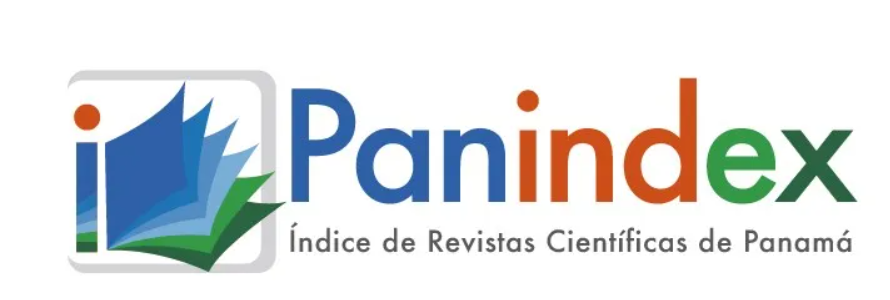The content of the publications and the links suggested in them are the sole responsibility of the authors and not of the METROPOLITAN UNIVERSITY OF EDUCATION, SCIENCE AND TECHNOLOGY (UMECIT) or CATHEDRA magazine. They are protected by international copyright laws just as the UMECIT and CATHEDRA logos, hence their reproduction is totally prohibited
This work is licensed under a Creative Commons Attribution-NonCommercial-NoDerivatives 4.0 International License.
The authors maintain the copyright and transfer the right of the first publication to the journal, with the article registered with Creative Commons Attribution-NonCommercial-NoDerivatives License, which allow others They can download the works published in this magazine and share them with other people, as long as their authorship is recognized, but they cannot be changed in any way nor can they be used commercially.
Authors are recommended to include their work in social networks such as Researchgate and institutional repositories once the article or visible fact has been published on the journal page, without forgetting to include the digital document identifier and the name of the journal.



Abstract
Forensic sciences have played an important role within the Justice Administration, in the countless crimes that occur daily in our country. Scientific evidence helps to clarify many times a punishable act, however, teamwork is essential with the other participants in the process (Ministerio Público, Policía Nacional, Órgano Judicial, Instituto de Medicina Legal y Ciencias Forenses), the latter in charge to collect forensic information, from the place of intervention, location, fixation, collection, packaging, transfer and analysis of the evidence in forensic laboratories in an identifying, qualitative and quantitative way to help identify those responsible for the events that are being investigated. Forensic sciences are changing and a series of trainings and trainings related to the use of forensic equipment, the competence of experts and quality standards are necessary in order to face the different criminal advances that are used by organized crime groups throughout the world. The application of the chain of custody, whenever a clue to ensure the identity, authenticity, preservation, storage, security, sameness and continuity of the same from its discovery to final disposition is discovered, when the prosecutor in charge of litigation in trial It presents it as evidence and depending on its argumentation, its theory of case and the level of conviction adjusted to the norms and respect for due process, it becomes valued by the judge to make a judicial decision; either guilt or innocence of the accused. However, the expert participation is important at the moment that the expert is questioned by his expert performance in the process, which must be objective and impartial, always remembering that a man of science where all the action is verifiable, because there are laws and protocols established at the national and international level adjusted to good forensic practices. Given the reach of the pandemic (covid-19), it has become necessary to review and update the scientific protocols established for intervention on the scene as a result of violent deaths or suspicious deaths, as set out in the Code criminal and proper protocols Institute of Legal Medicine and Forensic Sciences, the latter has sent all his experts both scene of the crime as forensic medicine to use extreme security measures when they must go to the scene of a violent death to gather evidence and there is a suspicion that the infected person may be a carrier of the coronavirus.Among the recommendations it is mandatory to use equipment individual / personal protection (known as EPI / EPP) and once discarded adopts new security measures both in equipment, vehicles and offices.
Keywords
References
• Ley 63 del 28 de agosto del 2008, Código Procesal Penal.
• Ley 69 del 27 de diciembre de 2007 que Deroga la Ley 16 de la Policía Técnica Judicial
de Panamá.
• Ley 50 del 13 de diciembre de 2006 del Instituto de Medicina Legal y Ciencias Forenses.
Autores
• Calvo López, Pedro (2008), Investigación Criminal y Criminalística, En el Sistema Penal Acusatorio. Tercera Edición. Editorial Temis S.A. Bogotá Colombia.
• González Moreno Rafael, (2006), Notas de un Criminalista, Tercera Edición, Editorial Porrúa.
• Grupo Iberoamericano de Trabajo en la Escena del Crimen (GITEC). (2012), Manual de
las Buenas Practicas en el Lugar de los Hechos,
• Icitap-Capri (s/f), Guía del participante análisis y procesamiento del lugar de los hechos curso “CSI”, Icitap-Capri
• Instituto de Medicina Legal y Ciencias Forense, (2011) Manual de Procedimiento del Sistema de Cadena de Custodia, Primera Edición, Editorial Novo art S.A.
• Instituto de Medicina Legal y Ciencias Forenses (2020), Módulo de Bioseguridad, de la Sección de criminalística de Campo, del Instituto de Medicina Legal y Ciencias Forenses.
• Ministerio Público y Instituto de Medicina Legal y Ciencias Forenses. (2020), “Protocolo De Actuación Para El Abordaje De Cadáveres De Casos Sospechosos O Confirmados De Infección Por Covid-19 Con Implicaciones Medico Legales” del Instituto de Medicina Legal y Ciencias Forenses.
• Planas Vera, Néstor. (2004), Vandemecum de Criminalística (Compendio de la Policía de Paraguay).
Downloads
Publication Facts
Reviewer profiles N/A
Author statements
- Academic society
- Universidad Metropolitana de Educación, Ciencia y Tecnología
- Publisher
- Universidad Metropolitana de Educación, Ciencia y Tecnología




















